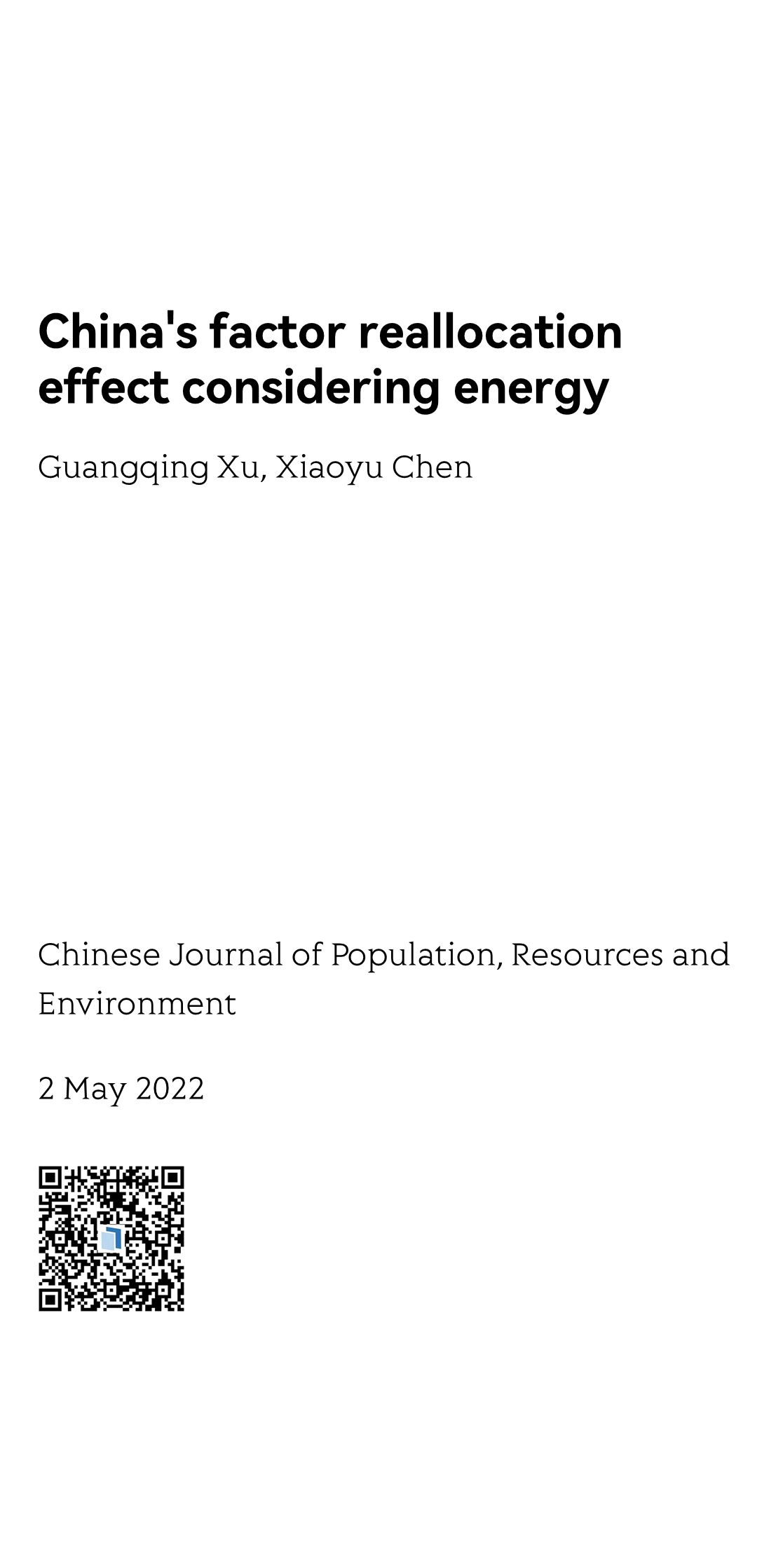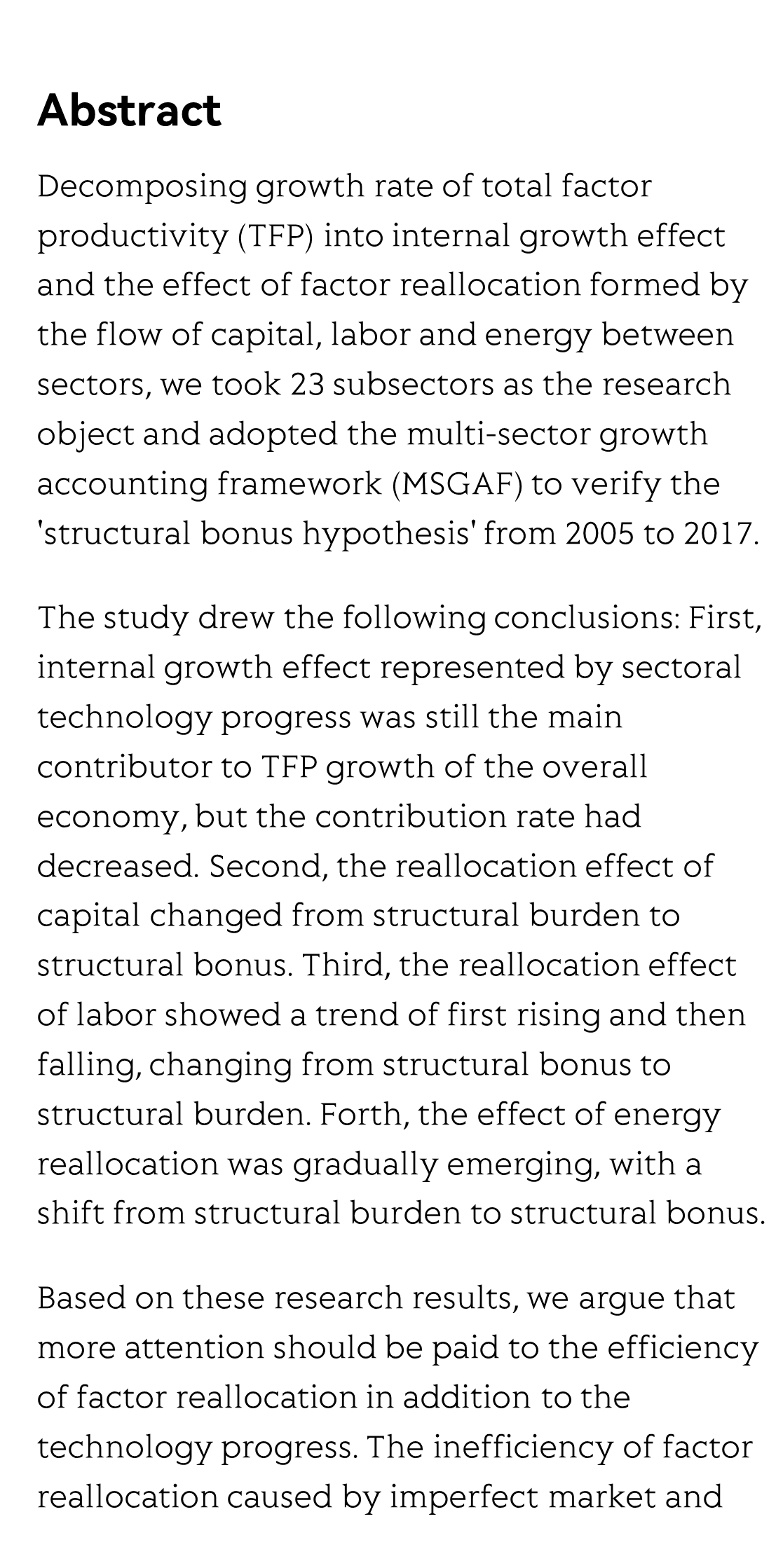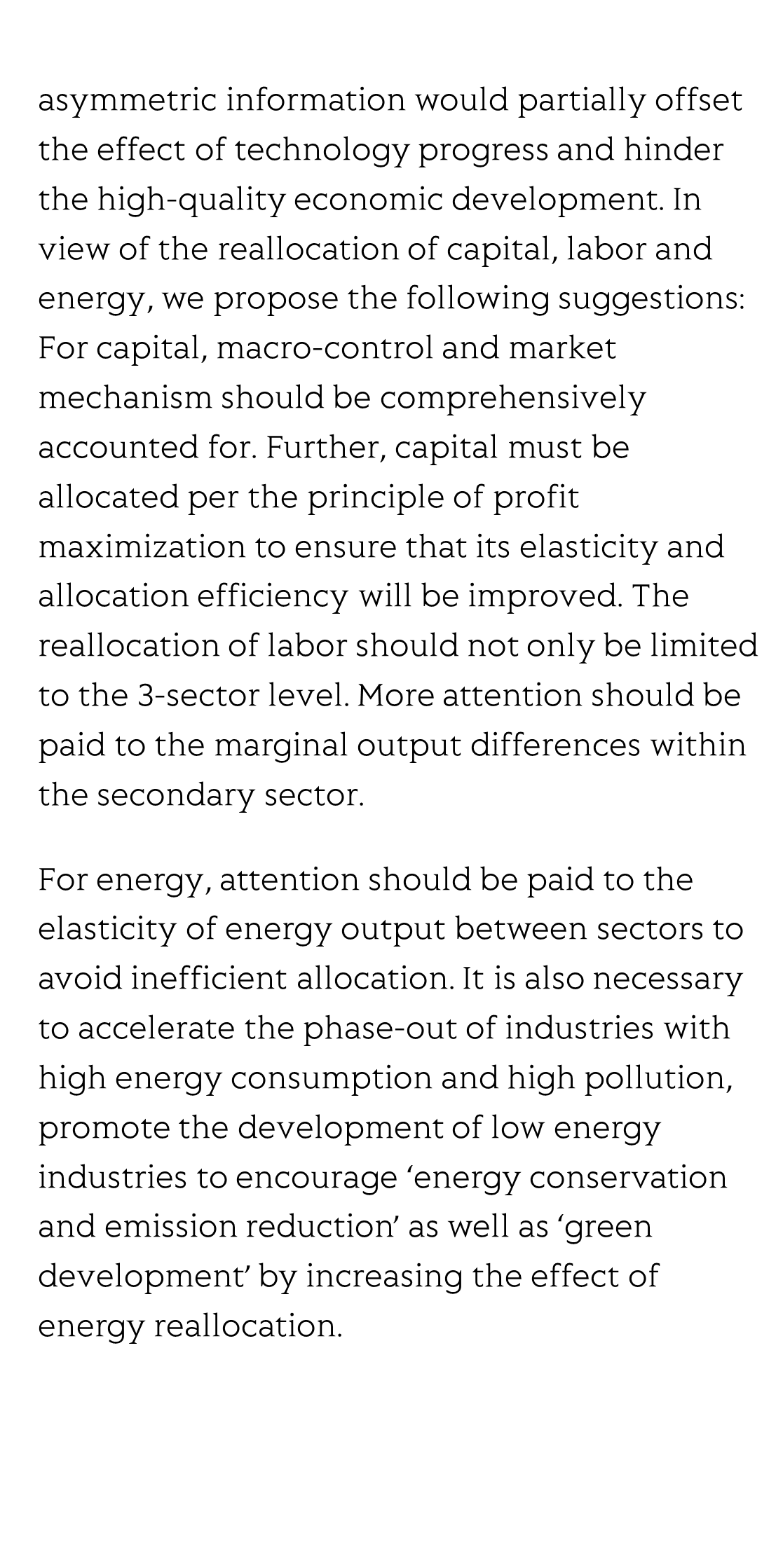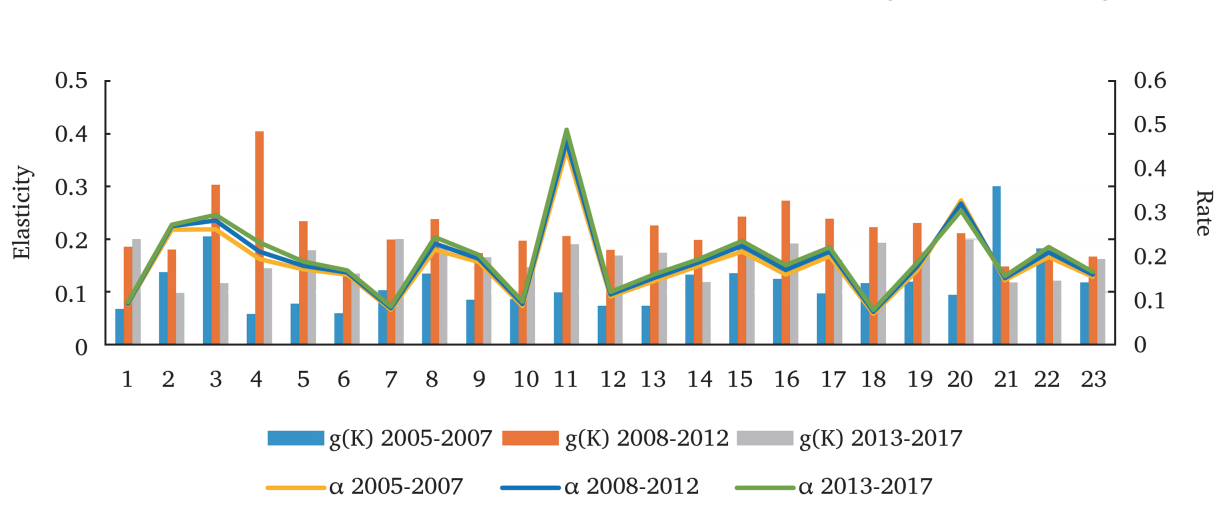(Peer-Reviewed) China's factor reallocation effect considering energy
Guangqing Xu 许光清, Xiaoyu Chen 陈晓玉
School of Environment and Natural Resources, Renmin University of China, Beijing, 100872, China
中国 北京 中国人民大学环境学院
Abstract
Decomposing growth rate of total factor productivity (TFP) into internal growth effect and the effect of factor reallocation formed by the flow of capital, labor and energy between sectors, we took 23 subsectors as the research object and adopted the multi-sector growth accounting framework (MSGAF) to verify the 'structural bonus hypothesis' from 2005 to 2017.
The study drew the following conclusions: First, internal growth effect represented by sectoral technology progress was still the main contributor to TFP growth of the overall economy, but the contribution rate had decreased. Second, the reallocation effect of capital changed from structural burden to structural bonus. Third, the reallocation effect of labor showed a trend of first rising and then falling, changing from structural bonus to structural burden. Forth, the effect of energy reallocation was gradually emerging, with a shift from structural burden to structural bonus.
Based on these research results, we argue that more attention should be paid to the efficiency of factor reallocation in addition to the technology progress. The inefficiency of factor reallocation caused by imperfect market and asymmetric information would partially offset the effect of technology progress and hinder the high-quality economic development. In view of the reallocation of capital, labor and energy, we propose the following suggestions: For capital, macro-control and market mechanism should be comprehensively accounted for. Further, capital must be allocated per the principle of profit maximization to ensure that its elasticity and allocation efficiency will be improved. The reallocation of labor should not only be limited to the 3-sector level. More attention should be paid to the marginal output differences within the secondary sector.
For energy, attention should be paid to the elasticity of energy output between sectors to avoid inefficient allocation. It is also necessary to accelerate the phase-out of industries with high energy consumption and high pollution, promote the development of low energy industries to encourage ‘energy conservation and emission reduction’ as well as ‘green development’ by increasing the effect of energy reallocation.
Flicker minimization in power-saving displays enabled by measurement of difference in flexoelectric coefficients and displacement-current in positive dielectric anisotropy liquid crystals
Junho Jung, HaYoung Jung, GyuRi Choi, HanByeol Park, Sun-Mi Park, Ki-Sun Kwon, Heui-Seok Jin, Dong-Jin Lee, Hoon Jeong, JeongKi Park, Byeong Koo Kim, Seung Hee Lee, MinSu Kim
Opto-Electronic Advances
2025-09-25
Dual-frequency angular-multiplexed fringe projection profilometry with deep learning: breaking hardware limits for ultra-high-speed 3D imaging
Wenwu Chen, Yifan Liu, Shijie Feng, Wei Yin, Jiaming Qian, Yixuan Li, Hang Zhang, Maciej Trusiak, Malgorzata Kujawinska, Qian Chen, Chao Zuo
Opto-Electronic Advances
2025-09-25







